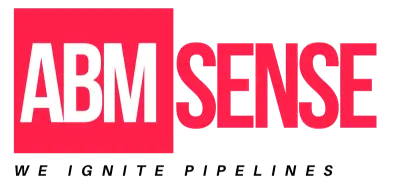How to Build a Scalable Demand Generation Framework?
Constructing a long-term business growth framework is mandatory in today’s competitive market. Today’s framework includes understanding how to create a demand generation framework that is not only effective but also scalable.
A demand generation framework comprises all the components that allow a business to ensure that a steady stream of leads arrives its way while optimizing resources. This is the kind of framework that allows a business to grow.
Understanding Demand Generation
Demand generation includes all marketing actions aimed at creating awareness and interest in a company’s products or services. Moreover, it is a systematic process to attract and nurture potential customers. According to HubSpot, companies that have a well-defined demand generation strategy experience 54% higher sales productivity and 43% higher customer acquisition costs.
- Product or service awareness: The first thing one needs to do is to make people aware of their product or service. Not just a few, but quite a few more than one who talks about it every day. Awareness yields interest, which is the second thing one needs.
- The interest stage involves feeding leads until they express actual interest in what you’re offering.
- Think About It: Prospects measure your offering against the competition.
- Intent: Leads show a significant inclination toward making a buy.
- Acquisition: The concluding step where the consumer decides to make a purchase.
Key Components of a Scalable Demand Generation Framework
When developing a framework for demand generation that can scale, think about piecing together these elements:
- Intended Audience: An exacting definition of your close-to-ideal customer. According to Demand Metric Inc., companies that focus their demands on specific close-to-ideal customer segments notice a 66% greater occurrence of lead initiation.
- Content Strategy: Create engaging, appropriate material that resonates with the audience you want to reach. This encompasses many types of media—be it written, spoken, or visual—that can be consumed in a variety of ways. For example, some channels are more conducive to long-form content (made up of many paragraphs) than others. If you want to influence the space in front of your audience, you need to understand which channels they are using and how best to utilize each of them.
- Many ways to market: Use various marketing channels like social media, email, pay-per-click advertising, and search engine optimization to expand your presence.
- Invest in Marketing Technology tools that can automate and optimize your processes—such as CRM systems and marketing automation platforms—that lie within the domain of MarTech.
How to Build a Scalable Demand Generation Framework?
Creating a scalable framework for demand generation means taking a specific, structured approach. To build something that can generate demand consistently and at a growing level, you first of all have to understand what its core components are.
- Establish Objectives: Make sure you have clear, quantifiable objectives that are in harmony with your business aims. These objectives must be particular and bound to a timeline.
- Data Analysis: Existing data are analyzed to gain an understanding of customers and their behavior. Using analytics can make decision-making better.
- Creating Content: Create content that connects with your target consumers. Content marketing generates three times the amount of leads as traditional marketing, Content Marketing Institute.
- Execute SEO Maneuvers: Ensure that all online content is search engine-friendly. An effective SEO approach can amplify your presence and pull in traffic without the use of payola.
- Observe and Tweak: Regularly judge how well your campaigns are performing. A/B testing can help you refine strategies and make them even better.
Measuring Success in Demand Generation
In the end, demand generation frameworks succeed (or fail) based on the measurement of outcomes. When building your framework, consider tracking these key performance indicators (KPIs):
- Volume of Leads: The quantity of leads produced by your campaigns.
- Conversion Rate: The percent of leads that become customers.
- Return on Investment (ROI): Assess the monetary gains in relation to the expenditure on your demand generation initiatives.
- Customer Acquisition Cost (CAC): Grasp the overall expenditure necessary to obtain fresh customers.
When businesses put these measures into practice, they can effectively gauge how successful their demand generation efforts are. Furthermore, they can gather data for these KPIs by using tools like Google Analytics or CRM software.
Conclusion
To sum up, a workable demand generation framework is vital for delivering sustainable growth. It’s a basic building block for businesses that want to organize their marketing efforts and to become much better at generating good quality leads. As with any formula for getting things done, when you follow the above steps, you should also periodically review and revise them based on what your business has learned since it started following the rules.
Explore More on us
Discover insightful blogs on our Blogging Space, check our WordPress Visitor Identification Plugin, and learn more about Account-Based Marketing.


